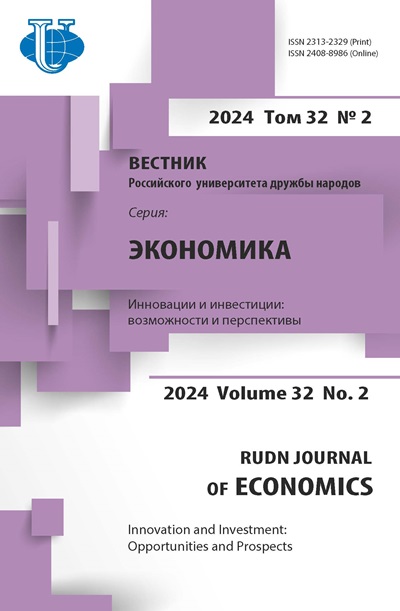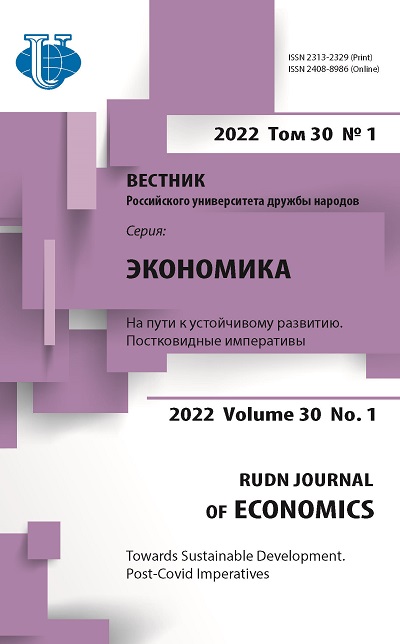Торговая стратегия Европейского союза и влияние Соглашения о свободной торговле между ЕС и Южной Кореей
- Авторы: Вусик Ю1, Хан-Сол Л.2
-
Учреждения:
- Сеульский национальный университет
- Российский университет дружбы народов
- Выпуск: Том 30, № 1 (2022): НА ПУТИ К УСТОЙЧИВОМУ РАЗВИТИЮ. ПОСТКОВИДНЫЕ ИМПЕРАТИВЫ
- Страницы: 70-78
- Раздел: Экономическая интеграция и глобализация
- URL: https://journals.rudn.ru/economics/article/view/30658
- DOI: https://doi.org/10.22363/2313-2329-2022-30-1-70-78
Цитировать
Полный текст
Аннотация
После глобального финансового кризиса Европейский союз (ЕС) пострадал от беспрецедентного экономического спада. Безработица резко возросла, а потребление сократилось, что негативно сказалось на росте доходов на душу населения в Европе. Впоследствии ЕС начал осознавать необходимость использования Соглашений о свободной торговле (ССТ), чтобы смягчить тенденцию низкого роста европейской экономики. В качестве первой инициативы Глобальной стратегии ЕС, которая была направлена на значительное расширение экспортных рынков ЕС в оффшорные страны посредством ССТ, Южная Корея была выбрана в качестве одной из первых целей. После восьми раундов переговоров о ССТ, начатых в 2006 г., ССТ между ЕС и Южной Кореей вступило в силу в 2011 г. Используя данные об экспорте и импорте UN Comtrade за период с 2000 по 2017 г., в этом документе рассматриваются изменения в структуре торговли ЕС и Южной Кореи до и после подписания соглашения о свободной торговле, а также эмпирически анализируется влияние данного соглашения на торговые связи между ЕС и Южной Кореи. Результаты наших регрессионных моделей показывают, что соглашение о свободной торговле действительно оказывает значительное положительное влияние на рост как объема торговли, так и доли торговли в мире между Южной Кореей и ЕС. Тот факт, что произошел рост не только в торговле сырьевыми товарами, но и товарами сферы услуг и прямых иностранных инвестициях, говорит о том, что благотворный цикл ССТ «ЕС - Южная Корея» может распространиться на смежные области. Кроме того, поскольку Южная Корея является страной, ориентированной на ССТ в регионе Восточной Азии, и имеет соглашения о свободной торговле с двумя крупнейшими экономиками мира как США и Китай, такое партнерство принесет ощутимые косвенные выгоды для ЕС. Ожидается позитивное воздействие этого преимущества в смысле увеличения торговли, производительности и числа рабочих мест, что благоприятно отразится на экономическом росте ЕС.
Ключевые слова
Об авторах
Ю Вусик
Сеульский национальный университет
Email: woosik@snu.ac.kr
ORCID iD: 0000-0001-8261-6842
старший научный сотрудник, Центр исследований международного развития, Высшая школа международных исследований
Республика Корея, 08826, Сеул, Гванак-гу, Гванак-ро 1Ли Хан-Сол
Российский университет дружбы народов
Автор, ответственный за переписку.
Email: 1042185141@pfur.ru
ORCID iD: 0000-0002-7846-2374
старший преподаватель, кафедра маркетинга
Российская Федерация, 117198, Москва, ул. Миклухо-Маклая, д. 6Список литературы
- Augier, P., Gasiorek, M., & Lai Tong, C. (2005). The impact of rules of Origin on Trade Flows. Economic Policy, 20(43), 568-624. https://doi.org/10.1111/j.1468-0327.2005.00146.x
- Business Europe (2007). Position paper on the EU-South Korea Free Trade Agreement.
- Busse, M., Gröning, S., & Groening, S. (2012). Assessing the impact of trade liberalization: The case of Jordan. Journal of Economic Integration, 466-486.
- Duong, N.B. (2016). Vietnam-EU Free Trade agreement: impact and policy implications for Vietnam. SECO/WTI Academic Cooperation Project Working Paper Series, 7.
- European Union (2015). Trade for all. Retrieved June 20, 2019, from http://trade.ec.europa.eu/doclib/docs/2016/august/tradoc_154919.pdf
- European Union (2016). Assessing Results of the EU-South Korea Free Trade Agreement. Retrieved June 20, 2019, from https://eeas.europa.eu/sites/eeas/files/eu-rok_fta_results_handbook_en.pdf
- European Union (2012). Consolidated version of the treaty on European Union. Official Journal of the European Union.
- Eurostat. Retrieved June 20, 2019, from http://ec.europa.eu/eurostat
- Francis, S. (2011). The ASEAN-India Free Trade Agreement: A sectoral impact analysis of increased trade integration in goods. Economic and Political Weekly, 46(2), 46-55.
- Jang, Y.J. (2011). The impact of bilateral free trade agreements on bilateral foreign direct investment among developed countries. The World Economy, 34(9), 1628-1651.
- Kang, Y-D., Lee, C-W., Lee, H., & Oh, H. (2011). Korea’s trade policy and strategy toward the EU after Korea-EU FTA, Policy Analysis. Korea Institute for International Economic Policy (KIEP), 11-10. (In Korean)
- Korean Ministry of Foreign Affairs, Korea-EU Free Trade Agreement. Retrieved June 20, 2019, from http://fta.go.kr/eu. (In Korean)
- Oh, W.K., & Lee, S.Y.T. (2011). The Impact of FTA on ICT industries: The case of the Korea-US FTA. Asia-Pacific Journal of EU Studies, 9(2), 51-64.
- Okabe, M. (2015). Impact of free trade agreements on trade in East Asia. ERIA Discussion Paper Series, (1), 48.
- Quimba, F.M.A., Barral, M.A.A., Rosellon, M.A.D., & Сalizo Jr, S.C. (2020). Impact of FTA on Philippine Industries: Analysis of Network Effects, 44.
- Thangavelu, S.M., Narjoko, D., & Urata, S. (2021). Impact of FTA on trade in ASEAN and Australia using customs level data. Journal of Economic Integration, 36(3), 437-461.
- Xiang, H., Kuang, Y., & Li, C. (2017). Impact of the China-Australia FTA on global coal production and trade. Journal of Policy Modeling, 39(1), 65-78.















